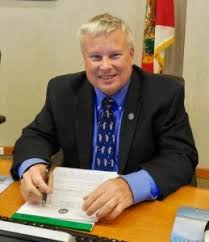Dale Martin
City Manager
Fernandina Beach
January 17, 2020

The final pieces of replacement and repair in the southern portion of the Marina are nearly completed. It is likely that the southern attenuator and interior basin will be able to again be able to welcome boats to the Marina as early as sometime next week. The replacement and repair effort have been challenging- permitting with the United States Army Corps of Engineers (USACE); dredging the basin and disposing of the resulting spoils; designing, building, and installing the attenuator and dock sections; and constructing the electrical systems to support the Marina.
While those efforts have had several fits and starts (nearly all smoothed over and worked out thanks to Mr. Bronson Lamb, the Project Manager), nothing compares to the ongoing behind-the-scenes frustrations in having to deal with the Federal Emergency Management Agency (FEMA).
Hurricane Matthew hit the City on October 7, 2016 (for those keeping count, that is 1,200 days ago from next Monday). Due to the waves created by the storm, the attenuator, or the outer dock, was destroyed. The attenuator, nonetheless, did serve its purpose of protecting, for the most part, the interior basins.
The FEMA recovery process officially commenced with the “kick-off meeting” which was conducted at City Hall on Dec 13, 2016. The roughly two-month gap between the triggering event and the kick-off meeting is typical- communities affected by disasters have the more pressing need of responding to the immediate effects of the disaster- in this case, debris removal and emergency repairs to several City facilities. A complete damage assessment of the Marina was completed in February, 2017, and shortly thereafter, a FEMA specialist arrived to conduct his own assessment of damages.
The FEMA specialist was on-site for several months (Mar-Jun, 2017). Upon departing, he provided a copy of the FEMA Cost Estimating Format (CEF) which detailed his findings and recommendations. The CEF indicated a replacement cost of approximately $6.5 million for the entire attenuator (including the reinstallation of all utility and fuel services). It is from this point that the FEMA process begin to falter.
The CEF is used to prepare FEMA Form 90-91, the official document indicating the cost of replacement/repair, but more notably, indicated that the project was eligible for 75% federal reimbursement. In addition to the federal reimbursement, the State of Florida would reimburse the City for half of the remaining 25%, bringing the total reimbursement of the project to nearly 90%. It took nearly three months for the FEMA Form 90-91 to be presented to the City for review and signature (Oct 7, 2017).
The permitting issues with the USACE- due to the proximity of Marina facilities to the federal navigational channel (the channel was authorized to be shifted west by Congress in 2000, but was not accomplished then and continues to be thwarted by other local officials today)- played out over the next several months, culminating in an on-site meeting (Aug 18, 2017) with federal officials including Congressman John Rutherford (an incredibly staunch and vocal ally throughout the efforts with the USACE and FEMA), USACE, FEMA, the United States Coast Guard, and the Florida Department of Environmental Protection. The USACE issued the necessary permit on Aug 31.
In October, FEMA sent another specialist to prepare a new Scope of Work and CEF. Please keep in mind that for both the first and second CEF, the damaged attenuator still remained in place, greatly facilitating the opportunity to conduct a damage assessment. The second CEF was presented to the City, maintaining the same Scope of Work (“utilize Contract Services to replace the following damaged items:” electrical systems, pilings, dock sections, and plumbing”). The estimate cost, however, indicated a cost of approximately $6.3 million for only the southern portion of the attenuator (the original $6.5 million estimate was for the entire length of the attenuator).
The City’s contractors mobilized and began work in December, 2017. With heavy assets in place, the City also opted to jointly complete the dredging and realignment of the southern basin, both projects that had been long-planned and unrelated to the effects of Hurricane Matthew. FEMA officials have had a difficult time comprehending the distinction between the two projects, claiming the City was “improving” the Marina with federal assistance (not allowed under FEMA regulations). The City has always maintained distinct accounting records of the two projects to clarify the separation of the two projects.
Last August (2019), FEMA presented a Request for Information to the City. The City responded in October. FEMA officials then decided that a third CEF was necessary (now realize that the damaged docks have been removed and disposed, making an assessment- at least in my mind- somewhat difficult to complete). I expressed my concerns that FEMA officials were simply fishing for reasons to reduce the originally agreed to reimbursement. The FEMA response was that a revised CEF would be more acceptable to regional FEMA officials and that if I did not like the results of the third CEF, the City could appeal. FEMA also indicated that the third effort would not begin until after Christmas. I have not had any communications from FEMA for this effort since Dec 3.
As indicated Congressman Rutherford has been invaluable in this fight. United States Senators Marco Rubio and Rick Scott (and former Senator Bill Nelson) have been greatly supportive, as well.
I look forward to having boats return to the Marina soon, but the fight with FEMA will likely continue for several months, if not longer.
